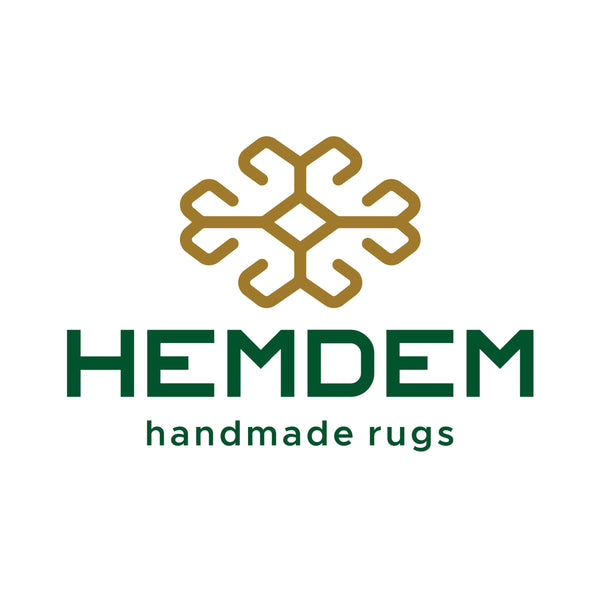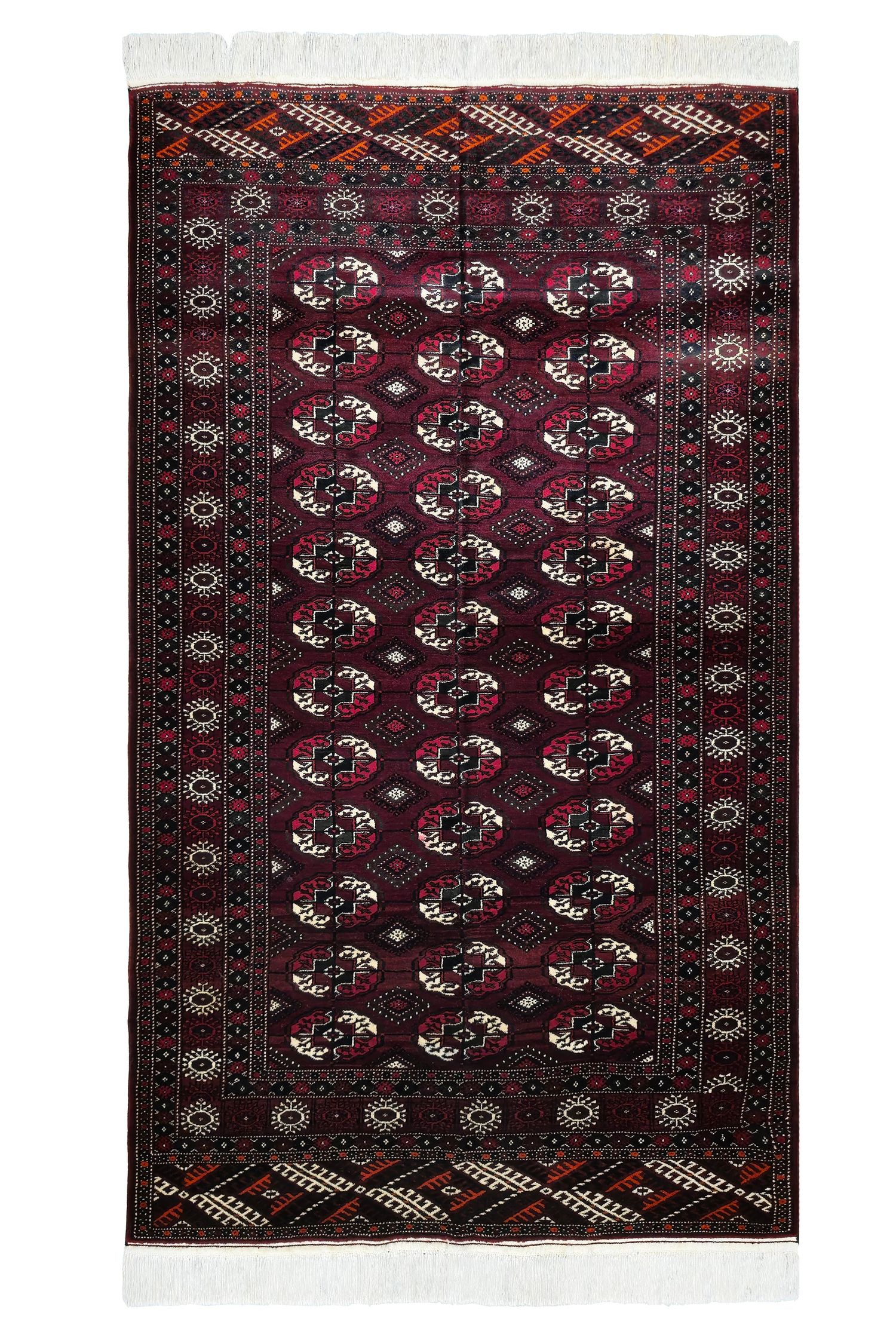
Pazyryk Rug – Oldest Carpet in the World and Its Turkmen Heritage | Hemdem Rugs
Pazyryk Rug – Exploring the World’s Oldest Carpet and Its Legacy
The Pazyryk rug, also spelled Pazyryk carpet, is widely regarded as the oldest surviving hand-knotted carpet in the world. Unearthed from a frozen tomb in the Altai Mountains of Siberia in 1949, this magnificent artifact is more than just a rug—it's a portal into ancient nomadic life and a testament to the artistry of early Turkic and proto-Turkmen cultures.

What Is the Pazyryk Rug?
The Pazyryk rug was discovered in a kurgan (burial mound) in the Pazyryk Valley, located in the Altai Mountains. Despite being buried for over 2,500 years, the icy conditions preserved it in near-perfect condition. Today, it is proudly displayed at the Hermitage Museum in St. Petersburg, Russia.
Made entirely from tightly knotted wool, the rug features elaborate imagery of horsemen, griffins (winged tigers), and symbolic geometric patterns. These figures remain vibrantly visible, proving the exceptional quality and durability of ancient Turkic weaving techniques.

Key Features of the Pazyryk Carpet
- High Knot Density: The Pazyryk rug boasts 3,600 knots per square decimeter, totaling an estimated 1.25 million knots overall. Its surface thickness is just 2 mm, highlighting the weaver’s extraordinary craftsmanship.
- Turkic Ghiordes Knot: Unlike Persian rugs that use the Senneh knot, this carpet employs the Turkish or Ghiordes knot, typical of Anatolian, Caucasian, and Central Asian carpets.
- Symbolism: The central motif consists of 24 star-like emblems, believed to represent the 24 Oghuz tribes, tying it deeply to Turkmen mythology.
- Repeating Composition: Unlike Persian rugs which often feature flowing, garden-like, or asymmetrical designs, the Pazyryk rug exhibits repeating motifs along both the borders and central field—an aesthetic aligned with Turkmen tribal carpet design.
- Colors and Materials: Made from wool and dyed with natural pigments, its rich reds, ochres, and blues mirror the natural dyes still used by Turkmen weavers today.
Cultural and Historical Significance
A Testament to Proto-Turkmen Identity
According to Dr. Ugacenkova, a leading scholar of Central Asian arts, the stylistic and technical elements of the Pazyryk rug align it more with Turkic nomadic tribes than with Persian court artisanship.
She highlights the presence of:
- The Ghiordes knot (not used in Persian rugs),
- At figürleri (horses), emblematic of the Turkmen steppe lifestyle,
- And the 24 tamga-like motifs symbolizing Oghuz tribal identities.
- All these point to a rug woven within the early Turkmen cultural sphere.

Functional Use in Nomadic Rituals
The Pazyryk rug was found not in a palace or urban setting, but in a funerary kurgan, indicative of nomadic burial practices. This setting contrasts sharply with Persian carpets, which were typically crafted for decorative use in elite palatial environments.
Turkmen carpets historically served functional and ritualistic purposes — as floor coverings, saddle blankets, or prayer items — and this use aligns with the context in which the Pazyryk rug was discovered.
Archaeological and Geopolitical Evidence
- The Pazyryk site is located thousands of kilometers from Persian imperial borders.
- No archaeological evidence suggests that Achaemenid Persians had reached the Altai Mountains.
- The region was historically home to Scythians (Saka), Huns, and proto-Turkmen tribes.
- Bronze carpet-weaving tools discovered in the Sumbar Valley of Turkmenistan, dated to the 14th century BCE, further support the claim that Turkmenistan is the spiritual and technical homeland of this weaving tradition.

Pazyryk Rug vs. Modern Handmade Rugs
Common Ground:
- Both use natural dyes, hand-spun wool, and symmetrical designs.
- Motifs like stars, borders, and horse imagery are still present in Tekke, Ersari, and Yomut tribal carpets.
Differences:
- The Pazyryk rug is ceremonial and symbolic.
- Modern Turkmen rugs may favor more durable weaves and adjusted sizes for commercial use.
The legacy of the Pazyryk rug lives on in the hands of Turkmen women today. Many have successfully recreated it using traditional tools and methods—proving that this art form continues unbroken through generations.

Can You Buy the Pazyryk Rug?
The original Pazyryk rug is a priceless artifact and not for sale. However, rugs inspired by its motifs or made in the same tribal traditions are available.
At Hemdem Rugs, we offer:
- Antique and reproduction Tekke rugs with gul motifs
- Tribal carpets with symmetrical layouts
- Handwoven rugs using the Ghiordes knot, just like the Pazyryk original

Shop Historical Rugs Inspired by the Pazyryk Carpet
FAQ – People Also Ask
What is the oldest carpet in the world?
The Pazyryk rug, dating to the 5th century BCE, is the oldest known hand-knotted carpet.
Where was the Pazyryk rug found?
In a burial mound in the Altai Mountains, Siberia, in 1949.
Why is the Pazyryk rug important?
It is an exceptionally preserved artifact showcasing early Turkic weaving techniques and nomadic cultural symbolism.
What materials were used in the Pazyryk rug?
100% wool, dyed with natural pigments.
Can I buy a rug similar to the Pazyryk carpet?
You can purchase reproductions or inspired tribal rugs from specialty shops like Hemdem Rugs.



